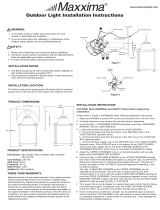
5
Guidelines for safe and efficient use
Guidelines for safe and efficient use
Please read these simple guidelines.
Not following these guidelines may be
dangerous or illegal.
Exposure to radio frequency
energy
Radio wave exposure and Specific
Absorption Rate (SAR) information This
mobile phone model KF390 has been
designed to comply with applicable
safety requirements for exposure to radio
waves. These requirements are based on
scientific guidelines that include safety
margins designed to assure the safety of all
persons, regardless of age and health.
• The radio wave exposure guidelines
employ a unit of measurement known
as the Specific Absorption Rate, or
SAR. Tests for SAR are conducted using
standardised methods with the phone
transmitting at its highest certified power
level in all used frequency bands.
• While there may be differences between
the SAR levels of various LG phone
models, they are all designed to meet
the relevant guidelines for exposure to
radio waves.
• The SAR limit recommended by the
International Commission on Non-
Ionizing Radiation Protection (ICNIRP) is
2W/kg averaged over 10g of tissue.
• The highest SAR value for this model
phone tested by DASY4 for use at the
ear is 0.636 W/kg (10g) and when worn
on the body is 1.34 W/Kg (10g).
• SAR data information for residents in
countries/regions that have adopted the
SAR limit recommended by the Institute
of Electrical and Electronics Engineers
(IEEE), which is 1.6 W/kg averaged over
1g of tissue.
Product care and maintenance
W ARNING!
Only use batteries, chargers and
accessories approved for use with this
particular phone model. The use of any
other types may invalidate any approval
or warranty applying to the phone, and
may be dangerous.
• Do not disassemble this unit. Take it to a
qualified service technician when repair
work is required.




















